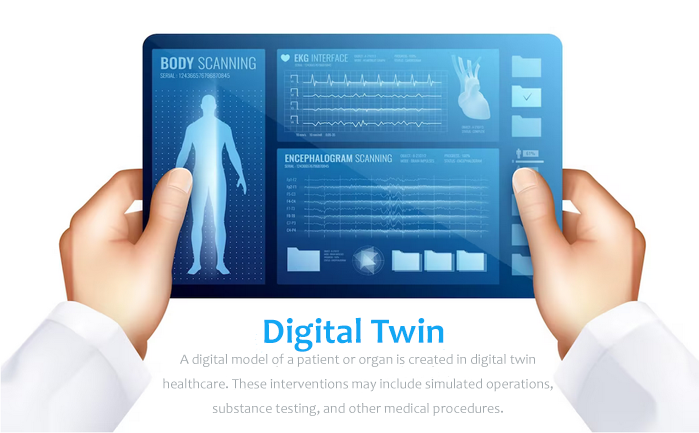
The digital twin can potentially transform the future of healthcare by facilitating a more personalized, predictive, and preventative approach. Using digital models of patients, healthcare professionals can simulate and analyze the outcomes of various medical interventions before conducting them on the actual patient. This instrument has the potential to revolutionize the future of healthcare. Read this article for more information.
What is a Digital Twin?
A digital model of a patient or organ is created in digital twin healthcare. It allows a prediction of the outcomes of medical interventions before their actual implementation on the patient. These interventions may include simulated operations, substance testing, and other medical procedures.
In addition, the digital twin uses modeling and simulation technologies to generate an accurate computer representation of the patient or organ under study. This procedure typically entails multiple stages, including simulation, analysis of results, and others.
What advantages does a digital twin offer?
It has numerous benefits for patients’ lives. Here are a few of these advantages.
Personalization of care
Personalization of treatment is a growing trend in the healthcare industry. The digital twin allows healthcare professionals to acquire patient-specific data, such as their medical history, genetics, and lifestyle. With this information, clinicians can determine, based on the individual requirements of each patient, which treatments will be most effective. This individualization can help improve patients’ health outcomes, reduce adverse medication effects, and enhance their quality of life.
More Optimized Healthcare Through Informed Decisions
It is essential to make informed decisions to provide optimal patient care. It can help healthcare professionals in making more informed decisions. Data collected from sensors, electronic health records, and other sources can be analyzed in real-time to provide valuable insights into the health status of patients.
In addition, this information can assist clinicians in more rapidly diagnosing diseases and assessing health hazards. In addition, it can help tailor treatments to the specific requirements of each patient, enhance care planning, and prevent medical errors.
Improved patient health monitoring
With the digital twin, monitoring patient health can be performed more efficiently and precisely. Data collected from sensors and other technologies connected to the digital twin can provide pertinent information regarding the health status of patients, such as vital signs, glucose levels, and health behaviors. Clinicians can use this data to detect future health issues before they become critical, intervene more rapidly to prevent complications and adjust treatments in real time.
Prospects for Healthcare’s digital twin
In the healthcare industry, the digital twin presents many promising prospects. For example, it could also enhance medical training by allowing students to simulate medical procedures on digital models before performing them on patients.
Additionally, It could advance medical research by allowing researchers to simulate clinical trials before administering treatment. As a result, it could accelerate the release of novel remedies and enhance patients’ health.



